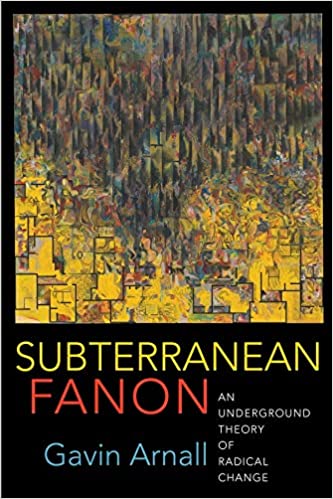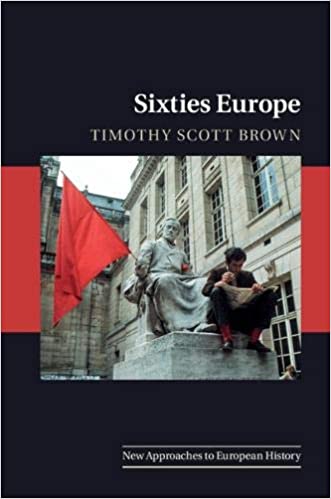
 Subterranean Fanon: An Underground Theory of Radical Change
Subterranean Fanon: An Underground Theory of Radical Change
By Gavin Arnall
Publisher: Columbia University Press
Recommended by Hélène B. Ducros
In this timely book and in response to the recent English publication of Alienation and Freedom ―a compilation of some of Frantz Fanon’s previously published and unpublished works― Gavin Arnall urgently calls for a rereading and rediscovery of Frantz Fanon’s oeuvre drawing on a new holistic gaze that highlights the radicalism of his writings through an exploration of Fanon’s lesser studied internal divisions. While Fanon’s intellectual inconsistencies and contradictions have been amply discussed before, by theorizing a split in Fanon’s thought, Arnall is able to replace as central to his work the project of change, or mutation, or dépassement, and what Achille Mbembe has called his metamorphic thought. Arnall’s exploration of Fanon’s dividedness in his seeking of a new mode for society rests on an acknowledgement that the overt dialectical dominant side of the split has been the focus of much attention, while the other –the “underground” Fanon—has been generally occulted. For him, this “subterranean” Fanonian mode of thinking is nondialectical, or even antidialectical, as it is not concerned with unity nor with reconciliation and aims to reach beyond universality principles. Through his close reading of a selection of Fanon’s texts, Arnall also identifies how these two Fanons are in constant dialogue and how the different dimensions of their relationship with one another get shaped. He invites readers to read Fanon’s ambivalence as being the result of the tension between the dominant Fanon and the alternative Fanon and makes intelligible the struggle between the dialectical and non-dialectical moments in Fanon’s writings, at the same time as he critiques how different scholars have put limits on the understanding of Fanon’s oeuvre by emphasizing one Fanon over the other.
This book will be especially appreciated by readers with an already solid understanding of Fanonian thought. It is an important contribution to Fanon studies, particularly relevant in the contemporary context of Black Lives Matter and other socio-political resistance movements across the world. Arnall’s book will undoubtedly appeal to a wide array of scholars who want to build on or challenge their previous interpretations of Fanon and sharpen their understanding of the ways in which Fanon’s writings participate in current debates such as those on post-coloniality, decolonial thought, critical race theory, or Afro-pessimism. While the book does not intend to be a complete restating of Fanon as resolutely internally contrasted, it succeeds in opening the field for a reformulation of Fanon’s thinking that examines its implications in effecting change and offers possibilities for unifying Fanon studies.

Sixties Europe
By Timothy Scott Brown
Publisher: Cambridge University Press
Recommended by Nick Ostrum
Timothy Scott Brown’s Sixties Europe is part of a wave of scholarship that has emerged over the last few years commemorating the fiftieth anniversary of the 1968 student movement. It distinguishes itself, however, in its broad perspective of the long 1968―and the long 1960s―as a transnational phenomenon that spanned Europe East and West and North and South, and found wide inspiration in the Kronstadt rebels, the Situationist and Fluxus movements, the 1956 reform movements in Hungary and Poland, the Frankfurt School, the global anticolonial movement, Third Worldism, and other non-doctrinaire and non-Soviet left-wing movements. Though still largely informed by Marxism, the movement nevertheless deviated from Marxism’s traditional focus on industrial class politics to self-realization through anti-consumerist and anti-establishmentarian counter-cultural activities. This dimension of the movement was more pronounced in Western Europe, as conditions in Eastern Europe and Iberia were more overtly oppressive. Nevertheless, a common resistance to authoritarianism, whether embodied in the police state itself or the hegemonic capitalist and communist ideologies of the state, served as a primary bond that connected movements across the Iron Curtain.
For such a short book, Sixties Europe’s subject matter is impressively wide. Nevertheless, Brown’s focus is pointed and he offers important correctives to the conventional historical narrative through mapping cross-border discourses and dispelling claims that young Eastern Europeans simply dismissed the New Left as privileged and naïve armchair communists. Although Brown also neglects the Western movement’s underwhelming response to the Prague Spring and both movements’ fetishization of Maoism―an authoritarian system in its own right―Sixties Europe otherwise grapples with the complexities, contradictions, and expansiveness of Europe’s New Left effectively and with a mix of admiration and appropriately critical nuance.
Published on December 8, 2020.




